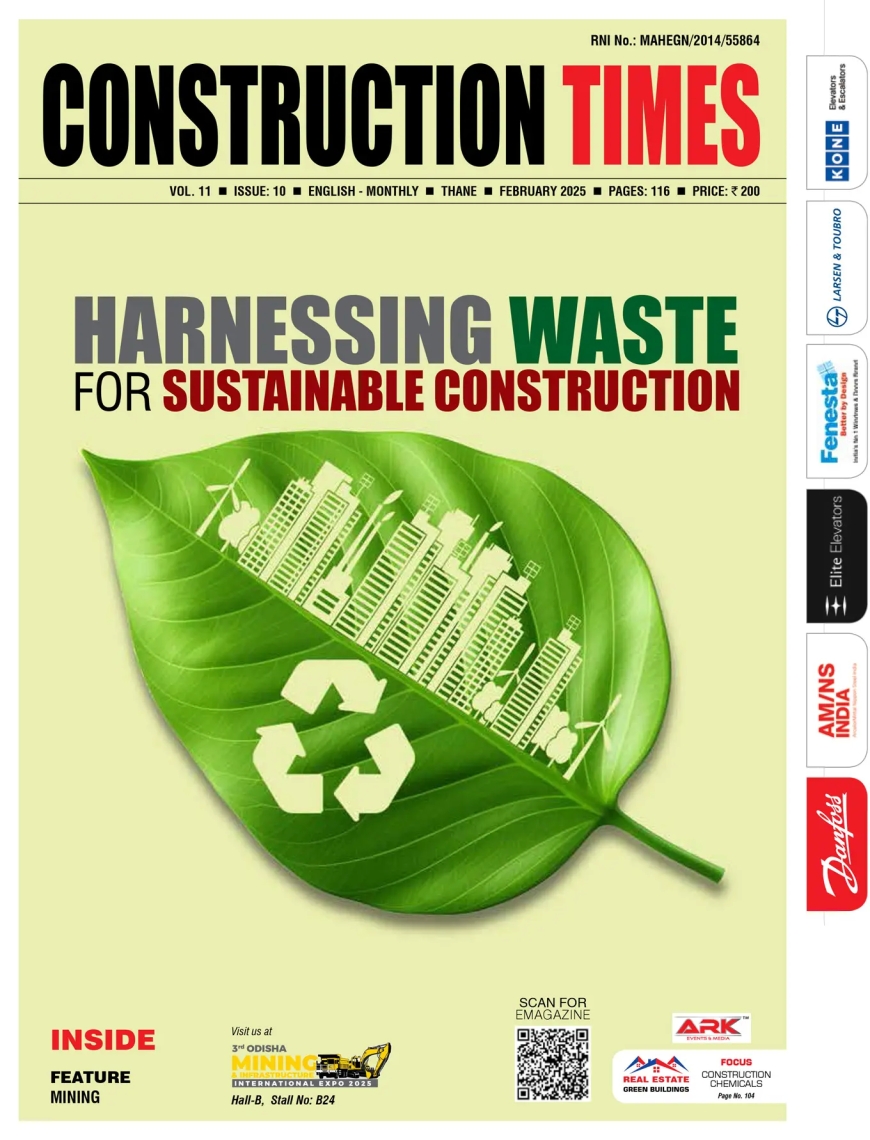SUSTAINABLE AND SAFER SYSTEMS.
Rising urbanization & rapid infrastructure growth have necessitated having sustainable, energy efficient & safer HVAC systems with smart solutions. Construction Times evaluates the possible challenges and growth opportunities for the industry. Heating, ventilation and air conditioning (HVAC) systems have increasingly become an essential part of any building. From homes and large shops to offices, transport

Rising urbanization & rapid infrastructure growth have necessitated having sustainable, energy efficient & safer HVAC systems with smart solutions. Construction Times evaluates the possible challenges and growth opportunities for the industry.
Heating, ventilation and air conditioning (HVAC) systems have increasingly become an essential part of any building. From homes and large shops to offices, transport hubs, and factories, HVAC appliances find widespread usage. Modern buildings today require an efficient yet smart HVAC system that is more comfortable, convenient and simultaneously cost effective.
According to a report by ResearchandMarkets.com, the Indian HVAC market is expected to grow from USD 8.53 billion in 2019 to USD 31.60 billion by 2030, at nearly 16% CAGR during the forecast period. These appliances are witnessing rising sales with people purchasing them to maintain the optimum temperature inside closed spaces and achieve proper ventilation.
The Indian HVAC market is divided into ventilation, cooling, and heating, on the basis of equipment type. Among these, the cooling category held the largest share during 2014-2019, and the same scenario is predicted up to 2030.
Among commercial, industrial, and residential end users, commercial users account for the highest procurement rate of HVAC appliances in the nation. In recent years, the number of corporate houses and shopping malls has risen vastly in the country, thus creating a huge demand for ACs and heating and ventilation systems.
The rising spending on other commercial infrastructure projects like the metro projects, airports, among others, is also helping the Indian HVAC market grow, as cooling and ventilation systems are important in all such places.
“With the rising avenues of sociological development and economic growth recovery, India's urban population is expected to soon reach close to half a billion. This accounts for more than 70% of India's GDP, which in turn requires a steady boom in the infrastructure sector. Currently, commercial buildings account for approximately one-third of global energy use and is expected to contribute 45% of efficiency-related CO2 emissions savings by 2040. Sustainable HVAC systems will therefore emerge as key in the puzzle that goes into making buildings green and eco-friendly,” said Anuraaga Chandra, Head India, Sales for Danfoss Climate Solutions.
The HVAC market was, however, faced with a challenge due to the rising number of Covid 19 cases and the concerns about air conditioning being a potential route of transmission for the virus. ISHRAE, the apex body of the HVAC players in India, had also released guidelines on how to operate air conditioning and ventilation systems to control spread of coronavirus disease in residences, workspaces and healthcare facilities.
“This pandemic threw up a lot of challenges in front of the HVAC industry with doubts being raised on possible spread of the virus because of air-conditioning. ISHRAE clarified that in fact a well-designed HVAC system can help control the spread by proper filtration, ventilation and air movement. Indoor air quality is now a top priority and thus a great opportunity for the HVAC industry. Existing systems retrofit and changes in new designs will ensure healthy and productive built spaces and the industry is ready for the same,” Amitabha Sur, President, ISHRAE said.
Echoing similar views, Gopala Krishnan Padmanabhan, Managing Director - Southeast Asia & Middle East, GBCI said the global pandemic has highlighted the role that buildings can play in improving health and wellness, in particular through improved indoor air quality.
“Ventilation, filtration, hygiene and control of source are all important factors. Pursuing green building is one strategy that can be employed; the LEED green building program has an entire credit category dedicated to indoor environmental air quality that combines traditional approaches, such as ventilation and thermal control, with emerging design strategies, including a holistic, emissions-based approach, source control of pollutants, monitoring for user-determined contaminants, requirements for lighting 'quality' and advanced lighting metrics,” he said.
Highlighting the challenges of carbon emission, Padmanabhan said that LEED helps buildings, communities and even cities use less energy and fewer resources and reduce their carbon footprint. LEED's impact on greenhouse gas emissions from the built environment goes well beyond building energy efficiency; the rating system continuously advances decarbonization by addressing building life cycle assessment, building materials, transportation and the water-energy nexus.
While the challenges are many, so are the opportunities. The HVAC industry has already adopted AI/ML and a lot has been done in technological transformation for the past many years. With the industry facing new challenges, the focus has shifted towards making products more environment friendly and sustainable for future generations.
As Gaurav Sah, Business Head, Air Conditioners Group, Panasonic India sums up, “The commercial air conditioner segment has a huge potential in India. However, last year was tough for the industry due to the pandemic which had an impact on demand as well as supply side. Pandemic led slowdown caused a reduction in commercial activities which affected the demand of commercial ACs, product availability was also a concern due to supply chain disruption. The industry is hopeful and expecting a positive turn around in Q1 as normal commercial activities resume.”
Hits: 1521
















